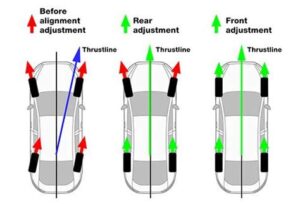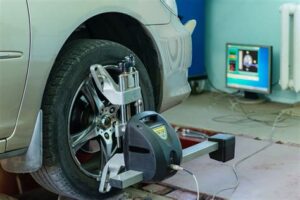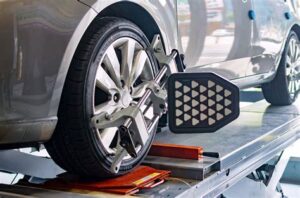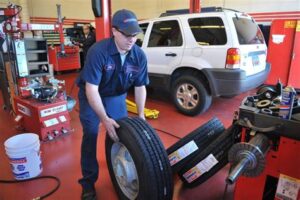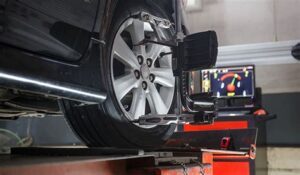Discover key insights on wheel alignment, factors influencing alignment time, averages for sedans and trucks, and tips to expedite the alignment process.When it comes to vehicle maintenance, few services are as crucial as wheel alignment. Proper alignment not only ensures a smoother ride but also extends the lifespan of your tires and enhances overall safety on the road. However, drivers often wonder, “How long does it take to get my car aligned?” The answer isn’t straightforward, as various factors can influence the duration of the alignment process. In this blog post, we’ll explore the intricacies of wheel alignment, including what it entails, what factors can affect alignment time, and the average time required for different vehicles, such as sedans and trucks. We’ll also share some tips on how to expedite the alignment process, helping you get back on the road with peace of mind. Join us as we delve into the essential aspects of wheel alignment and its importance for your vehicle’s performance.
Understanding Wheel Alignment
Wheel alignment is a crucial aspect of vehicle maintenance that ensures your car’s wheels are positioned correctly relative to each other and the road. It involves adjusting the angles of the wheels so that they make optimal contact with the pavement. Proper alignment contributes to better handling, tire longevity, and overall safety while driving. Misalignment can lead to a variety of issues, including uneven tire wear, poor fuel efficiency, and compromised steering control.
The alignment process typically involves three key angles: camber, caster, and toe. Camber refers to the tilt of the wheel when viewed from the front; caster is the angle of the steering axis when viewed from the side; and toe is the direction the tires point when viewed from above. Each of these angles can significantly affect your vehicle’s performance.
To maintain optimal wheel alignment, it’s recommended to have your vehicle checked regularly, especially if you notice any signs of misalignment such as a steering wheel that is off-center, pulling to one side, or uneven tire wear. Timely adjustments can save you time and money in the long run by preventing more extensive repairs related to tire or suspension damage.
Factors Affecting Alignment Time
When it comes to wheel alignment, several factors can influence the amount of time it takes to complete the service. Understanding these factors can help you better anticipate your vehicle’s needs and plan accordingly. Below are some key elements that can affect alignment time:
- Vehicle Type: Different vehicles have varying alignment specifications. For instance, trucks and larger vehicles typically require more time than standard sedans due to their size and complexity.
- Alignment Technology: Modern shops utilize advanced alignment technology, which may speed up the process. However, older equipment could lead to longer service times.
- Condition of Suspension Components: If your vehicle’s suspension or steering parts are worn out or damaged, additional time will be needed for replacements or repairs before the alignment can be completed.
- Shop’s Workload: The number of vehicles being serviced at the shop at any given time can also affect how long it takes to get your car aligned. Busy shops with many clients might lead to longer wait times.
- Additional Services: If you request other mechanisms to be checked or serviced while getting an alignment, it will also contribute to the total time needed for the service.
Being aware of these factors can help you manage your expectations regarding alignment time. While a standard alignment may only take about an hour, these variables can extend the duration significantly. It’s always a good idea to communicate with your service provider regarding any specific concerns or requests you may have.
Ultimately, understanding the elements that affect alignment time not only saves you time but can also improve your vehicle’s performance and safety. When your vehicle is properly aligned, it
Average Alignment Time for Sedans
The average alignment time for sedans typically ranges between 30 minutes to 1 hour. However, various factors can influence this duration, from the specific make and model of the car to the condition of the suspension components.
Generally, in a standard alignment procedure, the technician will:
- Inspect the suspension and steering components
- Check tire pressure and condition
- Adjust the alignment angles according to manufacturer specifications
It’s important to note that the alignment process can take longer in some cases, especially if repairs are needed before the alignment can be performed. For instance, cars with significant wear and tear on their suspension systems might require extra time
Average Alignment Time for Trucks
When it comes to maintaining the performance and safety of your truck, wheel alignment is a crucial aspect that can significantly affect the handling and tire longevity. But how long should you expect to spend at the shop for a truck alignment? Generally, the average alignment time for trucks can vary based on several factors.
On average, aligning a truck typically takes between 1 to 2 hours. This timeframe accounts for pre-alignment checks and adjustments. Heavy-duty trucks or those with complex suspension systems may require additional time, potentially extending the alignment process to 2 to 3 hours.
Here are some factors that may influence the total time required for a truck alignment:
- Type of Truck: Lighter trucks may align faster than larger, more complex models.
- Condition of Suspension Components: Worn or damaged parts may need replacement before alignment can proceed.
- Shop Efficiency: A well-equipped shop with experienced technicians can often perform alignments quicker.
In conclusion, planning for around 1 to 3 hours for a truck alignment is reasonable, and understanding the factors involved can help manage your expectations at the repair shop.
Ways to Expedite Alignment Process
When it comes to getting your car’s wheel alignment done, waiting can be a hassle. Fortunately, there are several ways to expedite the alignment process and minimize your time spent at the auto shop. Here are some effective strategies:
- Schedule an Appointment: Always call ahead and book a time for your alignment. This helps the shop prepare and may reduce your waiting time.
- Choose the Right Time: Try to visit during off-peak hours. Early mornings or mid-week days are usually less crowded.
- Know Your Vehicle’s Needs: Understanding your vehicle’s specifications can help technicians work more efficiently. Have your manual handy or be informed about any recent issues.
- Combine Services: If your car needs other services, like an oil change or tire rotation, schedule them on the same day to save time.
- Inspect Before Visiting: Conduct a preliminary inspection of your tires and suspension components. Identifying issues beforehand can help technicians get straight to work.
Implementing these tips will not only help in expediting the alignment process but also ensure a smoother and more efficient service experience.
In addition, keeping your vehicle in good condition through regular maintenance can also lead to a quicker alignment process. This means less wear and tear on suspension parts, which can complicate alignments.
Finally, always communicate openly with your service provider. Informing them about any symptoms or previous issues can allow them to address potential problems sooner, thereby reducing alignment time.
Frequently Asked Questions
What is the purpose of a car alignment?
A car alignment ensures that your vehicle’s wheels are set to the optimal angles, allowing for better handling, improved tire wear, and enhanced fuel efficiency.
How long does a typical car alignment take?
A typical car alignment usually takes about 30 minutes to an hour, depending on the service provider and current workload.
What factors can affect the duration of a car alignment?
Factors that can affect the duration include the type of alignment needed (two-wheel vs. four-wheel), the condition of the vehicle’s suspension, and if any parts need to be adjusted or replaced.
How often should I get my car aligned?
It’s recommended to get your car aligned every 6,000 miles or whenever you notice abnormal tire wear or changes in driving performance.
Can I drive my car if it needs an alignment?
While you can drive your car if it needs an alignment, it’s not advisable as it can lead to further tire wear, reduce fuel efficiency, and compromise your safety.
What are the signs that my car might need an alignment?
Common signs include the steering wheel pulling to one side, uneven tire wear, a crooked steering wheel when driving straight, and vibrations in the steering wheel.
Will an alignment fix my car’s steering issues?
An alignment can help correct steering issues related to wheel angles, but if there are other underlying problems such as worn parts or issues with the steering mechanism, those will need to be addressed separately.
